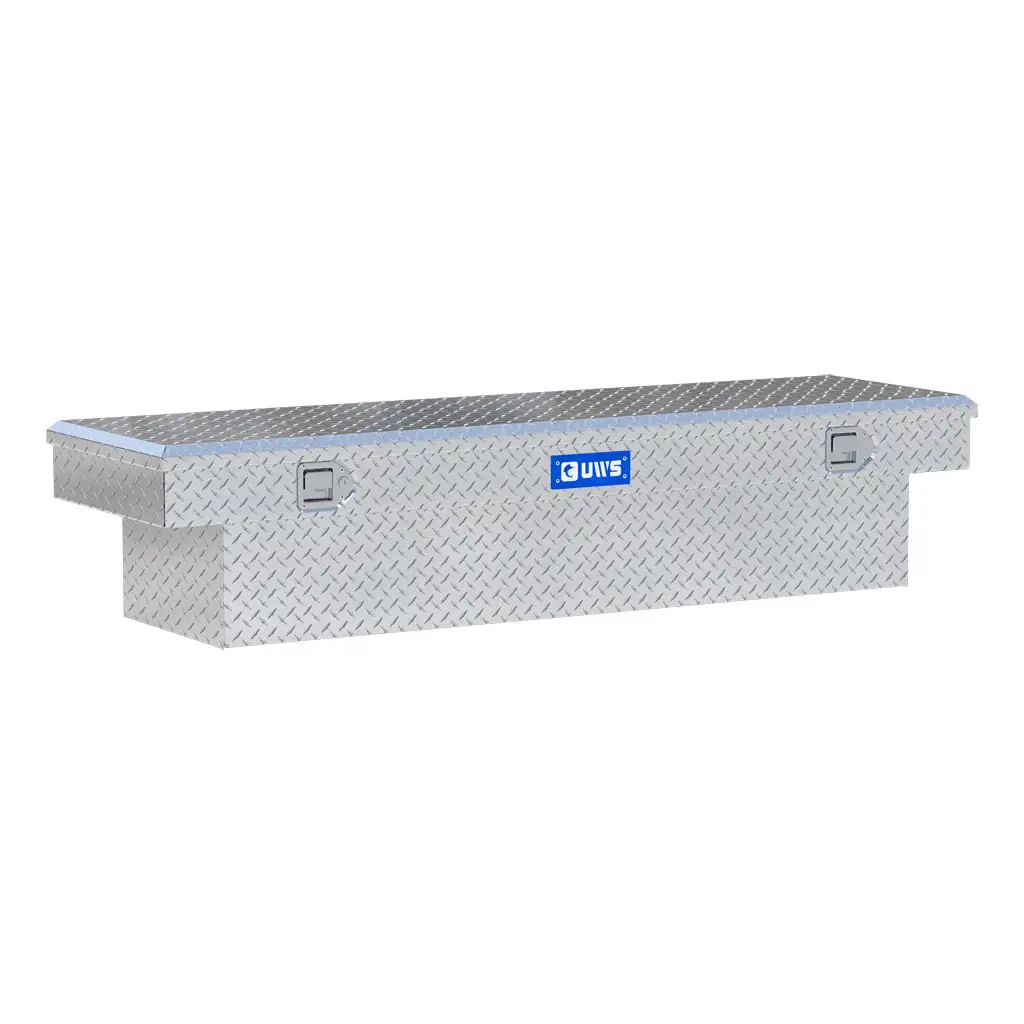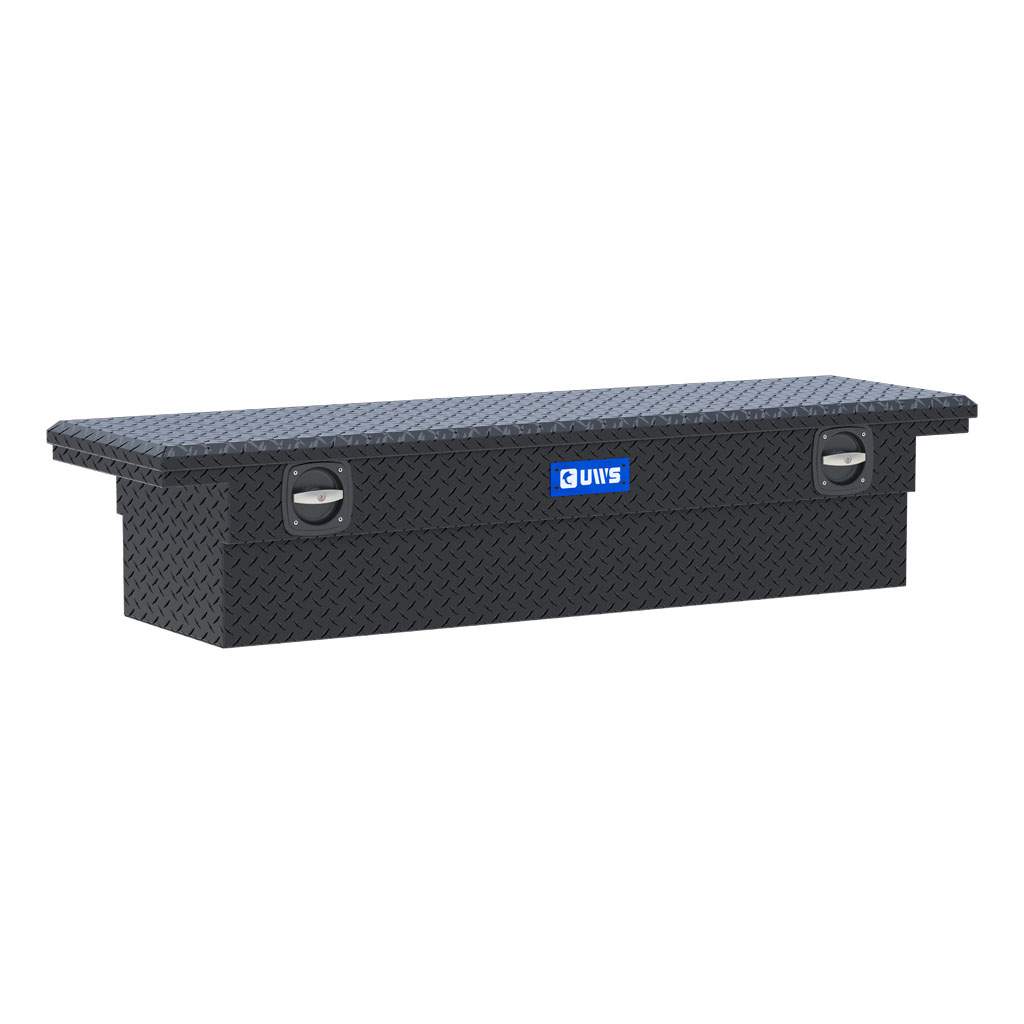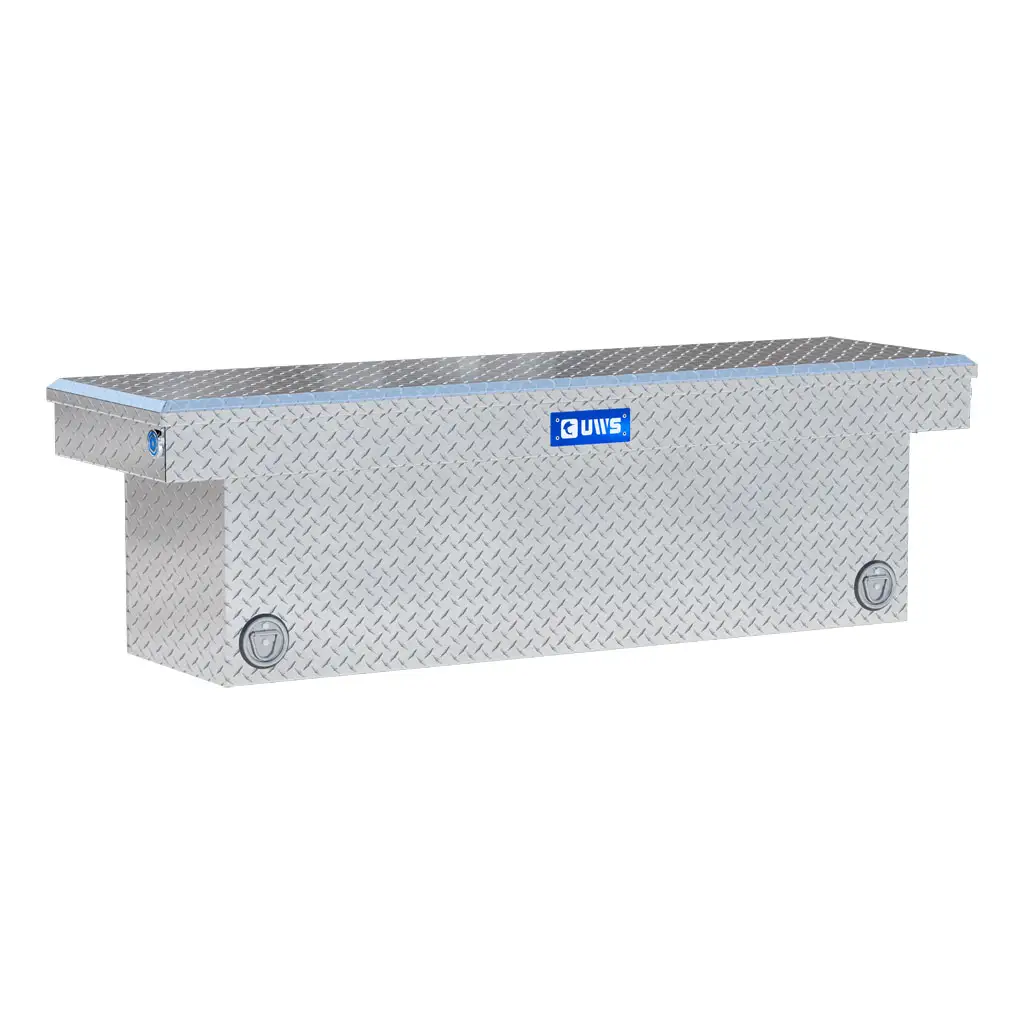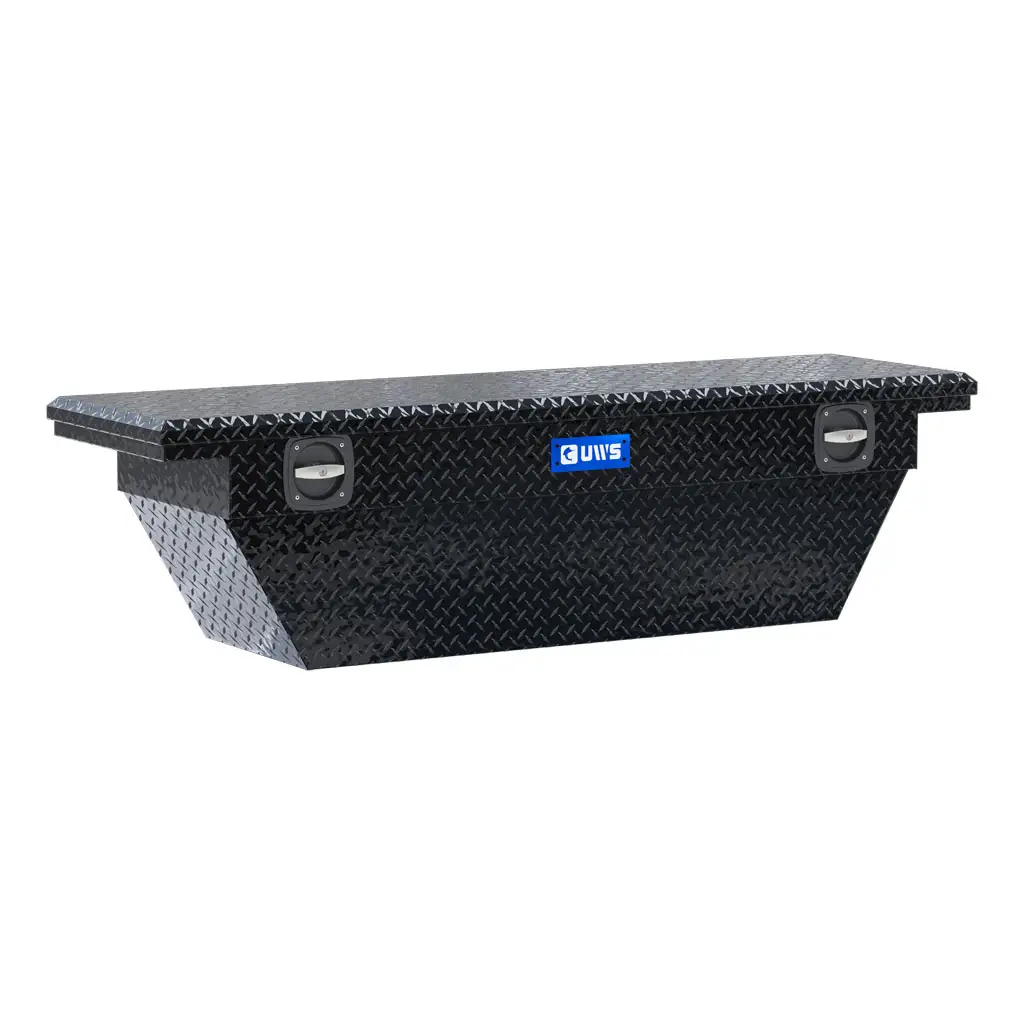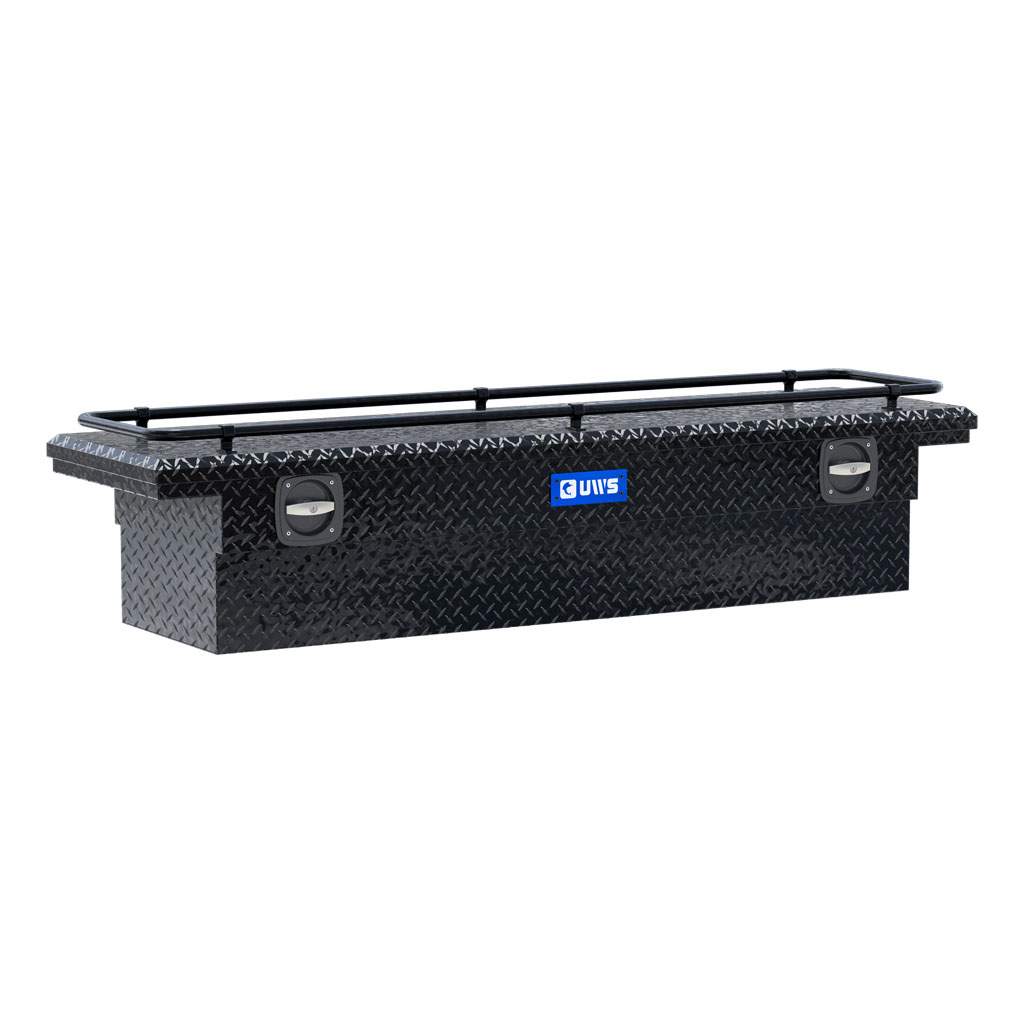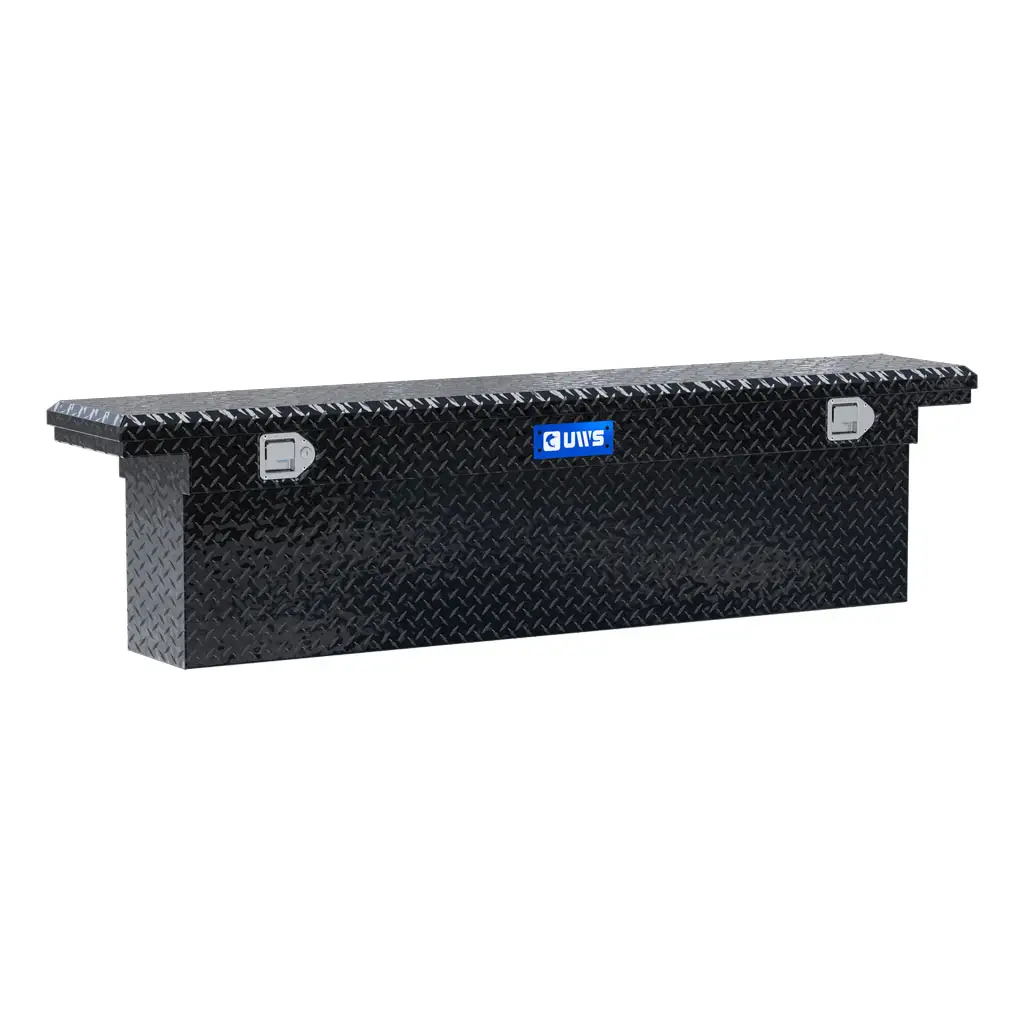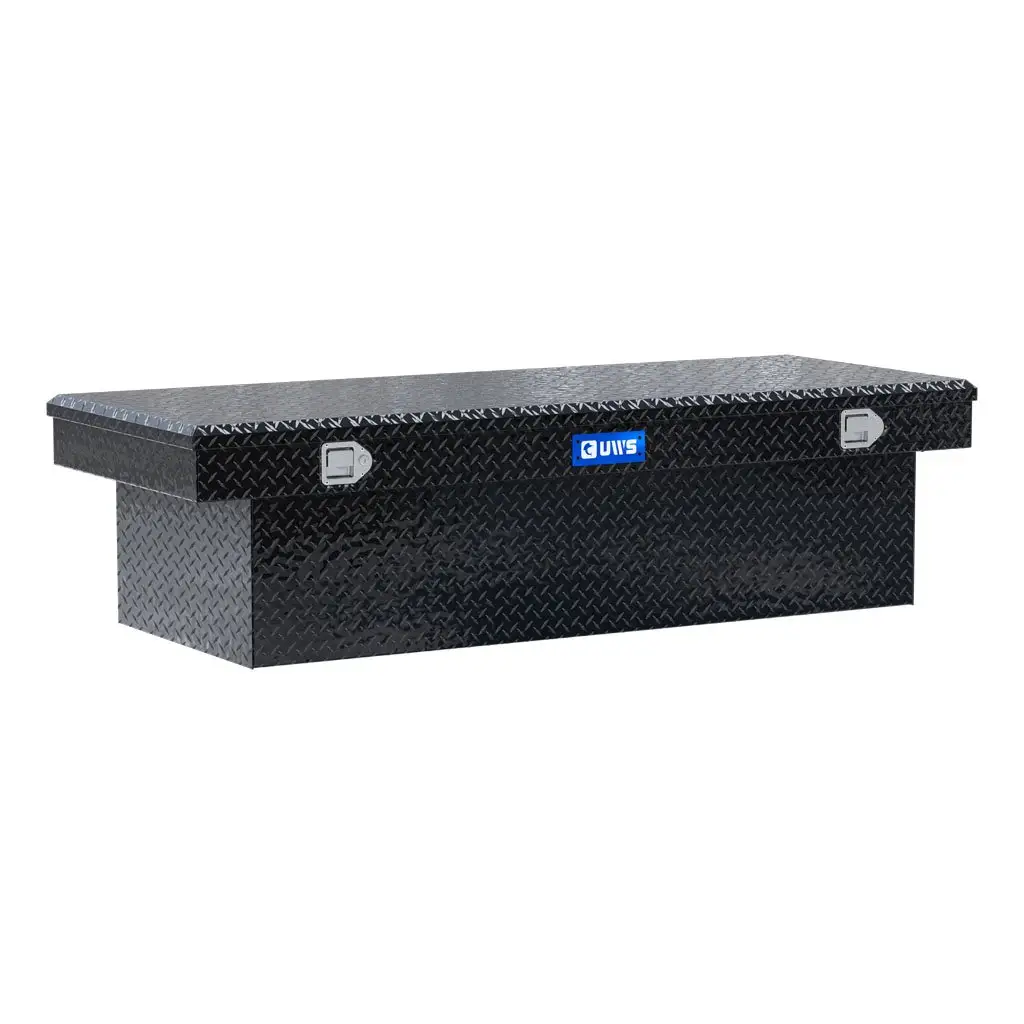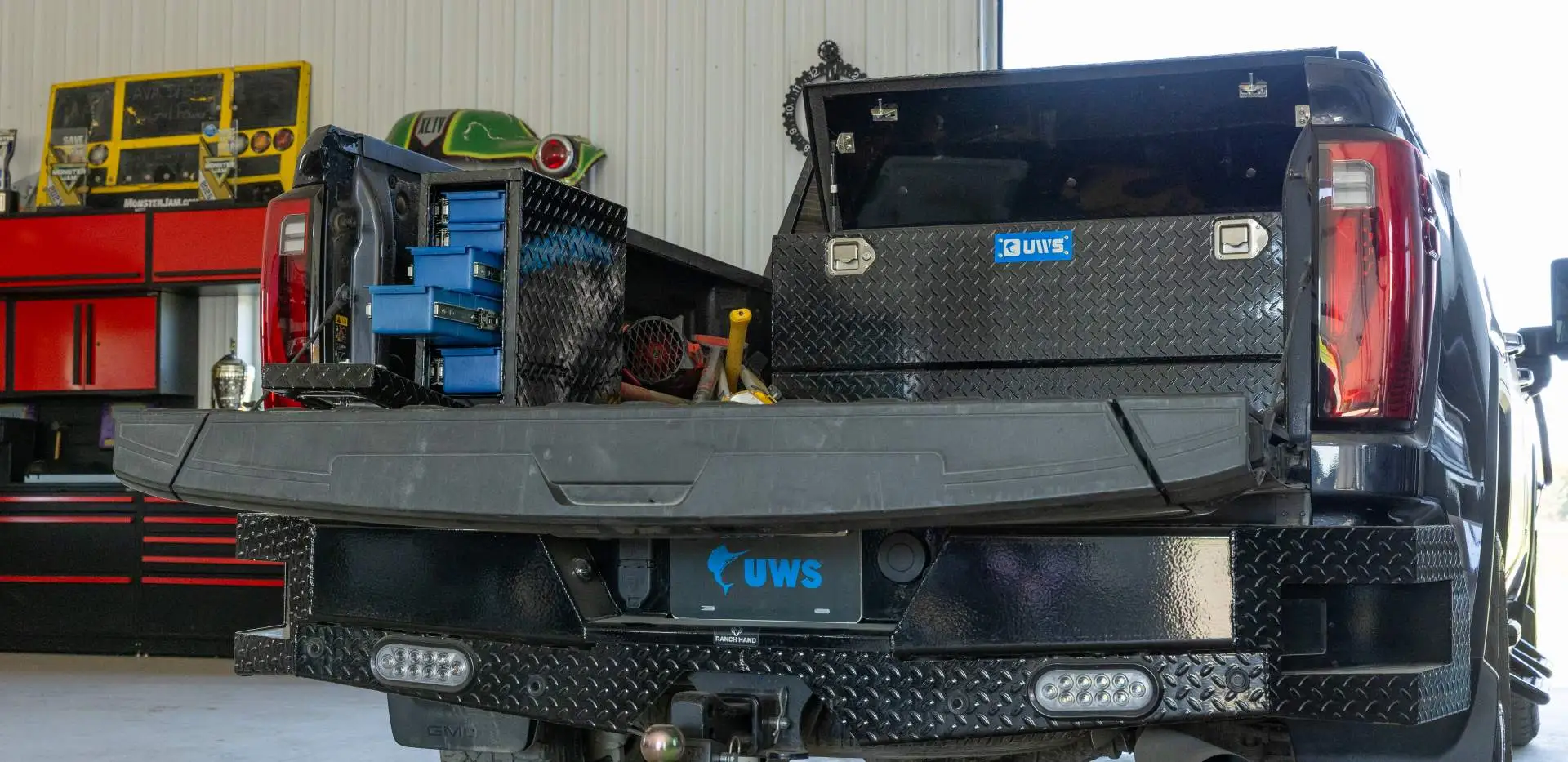

Truck Bed Length Guide: Everything You Need to Know About Truck Bed Sizes
When it comes to pickup trucks, bed length is one of the most important dimensions to understand. It determines how much you can haul, how easily you can maneuver, and what kinds of accessories will actually fit and function the way they should. From tool boxes and headache racks to hitches and tonneau covers, bed length plays a hand in almost every decision you make about your truck.
Still, it’s a detail that’s easy to overlook. Different manufacturers measure bed length in slightly different ways, and what’s called a “short bed” on one truck might be closer to a “standard bed” on another. Knowing the difference can save you a lot of frustration when it’s time to add storage, tow gear, or upgrade your setup.
In this truck bed length guide, we'll break down everything you should understand about truck bed length: how it’s measured, common sizes among major manufacturers, pros and cons of long vs short beds, how to measure your own truck, and how length plays into fitment of tool boxes and other truck accessories.
What is Truck Bed Length?
Truck bed length refers to the usable space inside the cargo box, measured along the floor from the bulkhead (the wall directly behind the cab) to the inside edge of the tailgate. It sounds straightforward, but the truth is that not every manufacturer measures it quite the same way.
Some quote an interior measurement that focuses on usable space, while others include the outer structure of the bed, which can add a couple of inches and create confusion when comparing specs or fitting accessories.
Because of these differences, it’s always worth paying attention to what’s actually being measured. The interior length is the dimension that matters most for real-world use. That number determines how much gear, material, or equipment you can load up and how well your accessories fit. Even a small variation in how the measurement is taken can make the difference between a perfect fit and an installation headache.
It’s also important to remember that length isn’t the only dimension that affects usability. The depth of the bed and the position of the wheel wells can change how much flat space you really have to work with. A truck might have a long bed, but if the wheel wells eat into the floor width, it limits the size of the gear or materials that can lie flat. Similarly, raised lips or thick bulkhead panels can slightly reduce the actual usable space, even if the spec sheet doesn’t show it.
When dimensions matter, and they usually do, it’s best to grab a tape measure and measure your own truck. Measure along the bed floor from the inside of the bulkhead to the inside of the tailgate, keeping the tape flat. That’s the number that counts when you’re deciding what fits and what doesn’t. Checking the manufacturer’s spec sheet afterward can confirm your measurement, but nothing beats knowing your own truck firsthand.
2025 Truck Bed Length Options by Manufacturer
| Make/Model | Short Bed | Standard Bed | Long Bed |
| Chevrolet Colorado | 61.70" | N/A | N/A |
| Chevrolet Silverado 1500 | 69.92" | 79.44" | 98.18" |
| Chevrolet Silverado 2500 HD / 3500 HD | N/A | 82.25" | N/A |
| Ford F-150 | 67.1" | 78.9" | 97.6" |
| Ford F-250 / F-350 / F-450 Super Duty | N/A | 81.9" | 98.1" |
| Ford Ranger | N/A | 59.6" | N/A |
| GMC Canyon | 62" | 74" | N/A |
| GMC Sierra 1500 | 69.9" | 79.44" | 98.2" |
| GMC Sierra 2500 HD / 3500 HD | 69.9" | 79.44" | 98.2" |
| Nissan Frontier | 59.5" | 73.3" | N/A |
| Ram 1500 | 67.4" | 76.3" | N/A |
| Ram 2500 / 3500 | N/A | 76.3" | 98.3" |
| Toyota Tacoma | 60.5" | 73.7" | N/A |
| Toyota Tundra | 66" | 78" | 97.2" |
Long Bed vs. Short Bed: What's the Difference?
When people talk about truck bed lengths, the terms short bed and long bed get thrown around a lot, but their actual meanings depend on the make and model of the truck. Generally, a short bed (sometimes called a standard or regular bed), refers to the more compact cargo box offered on that particular model. The long bed, or long box, is the extended version that gives you the most floor space a truck can offer. The difference might sound small on paper (around 1.5-2’), but in practice, that extra length can completely change how a truck feels, drives, and works.
On a full-size pickup, a short bed is typically around 5.5’ to 6.5’ long, while a long bed stretches closer to 8’. Midsize trucks like the Tacoma or Ranger have shorter ranges, usually around 5-6’ for the short bed and a little over 6’ for the long version. Those numbers might not seem like much, but they have a big impact on what you can haul. A long bed makes it easier to carry longer materials like lumber, ladders, or piping without needing to angle or strap things down in awkward ways. It also gives you more options for permanent setups, like installing multiple tool boxes, a fuel transfer tank, or a sliding bed system, without losing usable cargo space.
Of course, a long bed doesn’t come without tradeoffs. Adding that extra length means adding more truck, and with it comes a larger turning radius, more weight, and a bit more of a challenge when parking in tight spots or maneuvering through job sites. In some cases, long beds aren’t even available with certain cab configurations. For instance, pairing a long box with a full crew cab can make the overall vehicle length too large to fit comfortably in a standard garage or meet manufacturer turning standards. That’s why you’ll often see long beds offered mostly on regular or extended cab models, while the popular crew cab versions tend to pair with shorter or mid-length beds.
Short beds, on the other hand, are favored by drivers who prioritize convenience, maneuverability, and cab space. They’re easier to park, easier to turn, and they shed a bit of weight compared to long-bed models, which can slightly improve fuel economy. The tradeoff, of course, is cargo room. Long items like lumber or sheet goods will often hang past the tailgate, and space for tool boxes or hitches can be more limited. Some truck owners get around this by adding a bed extender or specialized racks, but at the end of the day, the shorter floor just gives you less to work with.
Because of that balance between practicality and capability, many drivers end up choosing a “standard” or “mid-length” bed when it’s available. It’s the sweet spot for everyday use: long enough to haul serious cargo when needed, but short enough to stay manageable in the driveway or parking lot.
In terms of popularity, the standard bed leads the pack on most modern full-size pickups. It’s what you’ll most often find in dealer lots, as it appeals to both work and recreational users. Long beds remain popular among tradespeople and haulers who regularly carry oversized materials or use specialized accessories 5th wheel hitches. Short beds are common on crew cab trucks and city-driven pickups, where maneuverability matters more than maximum load space.
Ultimately, the best choice comes down to how you use your truck. If it’s a daily workhorse that hauls materials or tows heavy loads, the long bed will give you flexibility and room to grow. If your truck pulls double duty between job sites and tight parking spaces, the standard option is the best all-rounder. And if you mostly need cab space for crew or family and value a tighter turning radius, the short bed might just fit your lifestyle perfectly.
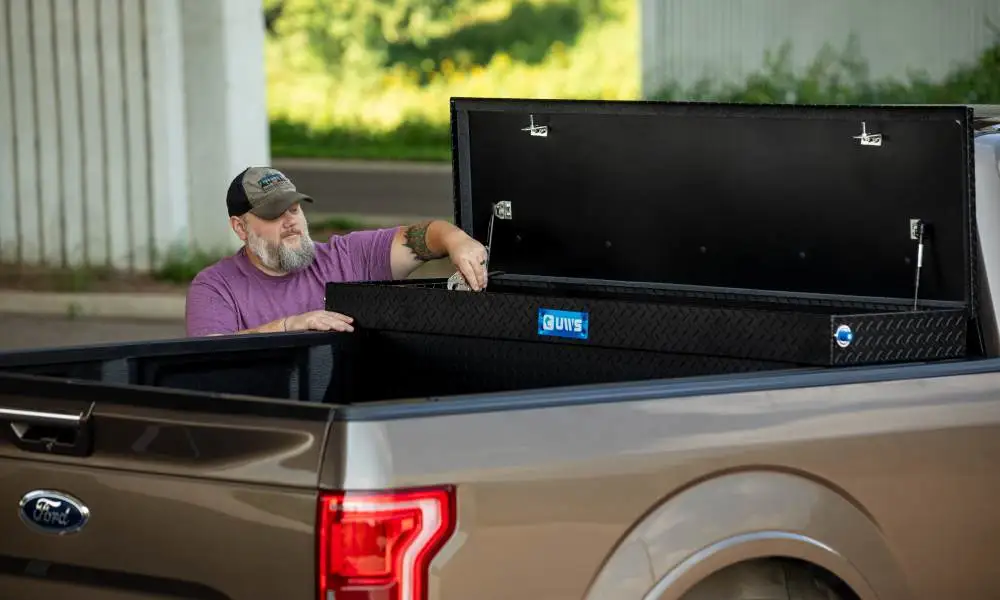

How to Measure Your Truck Bed
Knowing your truck’s exact bed length isn’t just a formality. It’s one of the most important steps you can take before buying accessories or replacement parts. Manufacturers often round their measurements or use slightly different methods for calculating bed size, which can lead to confusion if you rely solely on spec sheets. Measuring your own truck removes all the guesswork. It ensures that your tool box, hitch, tonneau cover, or headache rack will fit exactly as intended, with no surprises once the hardware comes out of the box.
Even if you already know your truck’s model year and trim, it’s worth double-checking. Over time, body styles change, tailgates get redesigned, and even the mounting lip of the bed can shift by an inch or two. Those small differences can make or break the fit of a crossover tool box or a fuel transfer tank. Taking five minutes with a tape measure can save you hours of frustration down the road.
Here’s how to do it right:
- Open the tailgate
Start with the tailgate down to give yourself full access to the bed floor. Make sure the bed is empty and the surface is clean so you can measure accurately. - Measure the interior bed length
Hook your tape measure on the inside face of the bulkhead (the vertical wall directly behind the cab) and pull it straight along the floor to the inside edge of the tailgate or hinge point. Keep the tape flat and level. This measurement gives you the usable interior length of your truck bed, which is the number that matters most for fitting accessories. - Measure bed depth and width
Next, measure from the bed floor to the top of the side rails to get your vertical depth. Then, measure across the bed to determine the width between the inside walls. Make note of how far the wheel wells extend into the bed. This can affect how tool boxes, bed slides, or fuel tanks fit. - Identify accessory locations and clearances
If you plan to install a 5th wheel or gooseneck hitch, mark where it will sit and measure the space left behind it. This helps you understand what kind of clearance you have for a crossover box or transfer tank. As a rule of thumb, leave at least 6” of space between a tool box and the front edge of a hitch assembly to ensure smooth operation and prevent contact during turns. - Compare to manufacturer specifications
Once you’ve gathered your numbers, check them against the manufacturer’s listed dimensions and any accessory specs you’re considering. Keep in mind that some brands measure over the rails, while others measure inside the bed, so make sure you’re comparing apples to apples. - Double-check before ordering Accessories
Before you buy, recheck your measurements and confirm the fitment details for your truck’s exact year, make, and model. Even a small difference in how a bed is designed can affect how well an accessory fits or how it sits once installed.
Why Bed Length Matters for Acccessories
Your truck bed isn’t just an empty space. It’s a work area, storage bay, and mounting platform all in one. The exact dimensions of that space determine not only what you can haul but also what kind of accessories will actually fit. Even a few inches of difference in bed length can change how a tool box mounts, how a hitch operates, or whether a tonneau cover seals correctly. That’s why understanding your specific bed size isn’t just “nice-to-know.”
Truck accessories are designed to match the contours, clearances, and anchor points of specific bed configurations. When you know your measurements, you can plan smarter whether you’re building out a dedicated work truck or adding convenience accessories for everyday use. Below are the most common accessory types affected by bed length, and what you need to watch out for with each.
Tool Boxes and Crossover Boxes
A tool box must sit securely in the bed without obstructing the cab, tailgate, or wheel wells. The interior bed length and the tool box body depth both play major roles in determining fit. If a box is too deep front-to-back, it can press against the wheel wells or eat into usable cargo space. Also consider how the lid opens: a deeper box may need clearance between the lid and the cab window to avoid scuffing or binding when opened.
5th Wheel & Gooseneck Hitches
Bed length directly affects hitch type and trailer clearance. On short-bed trucks, a sliding hitch is often necessary to prevent the trailer from striking the cab in sharp turns. The placement of a hitch assembly can also eat into the remaining bed space available for tool boxes, tanks, or other gear. If you’re pairing a hitch with a tool box, plan at least 5-6” of vertical clearance between the top of the box and the underside of the trailer overhang, especially if the trailer front is squared-off rather than V-nosed. Neglecting this can result in contact during turns, potentially damaging both your trailer and your truck bed accessories.
Headache Racks
Headache racks mount directly behind the cab, which means they don’t usually reduce your usable bed length, but they can affect vertical clearance and rear visibility. Some racks have deep brace structures or angled tops that may conflict with a crossover tool box lid or ladder rack uprights. If you plan to run multiple accessories together, check how the headache rack’s shape interacts with box lids, tonneau rails, or rear window angles. A few extra inches of clearance planning here can save you from compatibility headaches later on down the road.
Tonneau Covers
Tonneau covers are precision-fit products, designed to match exact bed lengths for proper seal and latch engagement. Even a 1” variance in bed length can cause a cover to leave gaps, bind when rolling up, or fail to latch properly. When ordering a tonneau cover, rely on your own measurements, not just the length listed in marketing materials. Measure twice and confirm that your chosen cover lists your exact bed size.
Racks, Ladder Racks, Bed Slides, & Cargo Systems
These systems use the bed rails or floor as their mounting base, so incorrect assumptions about bed length can cause alignment and clearance issues. For example, a rack that’s too long may interfere with the tailgate or hang past the rear bumper, while a bed slide that’s mis-sized can jam against the tailgate when deployed. Many modular systems now offer adjustable bases or rail mounts, but these still depend on accurate starting measurements.
In short, your truck’s bed length isn’t just a number. It’s a blueprint for every upgrade and attachment you add. Whether you’re fitting a transfer tank, tool box, rack, or trailer hitch, that measurement defines your limits and possibilities. Taking the time to get it right ensures your accessories line up properly, operate safely, and look like they were made for your truck.
UWS Tool Boxes & Storage Solutions
Once you know your truck bed length, the next step is choosing gear that fits your truck and your work just right. That’s where UWS comes in. Every UWS tool box is engineered for precise fitment, built from thick, one-piece aluminum to deliver lasting strength, security, and a professional finish that stands up to real use.
From crossover boxes that mount snugly behind the cab to side-mount and chest boxes that maximize every inch of space, our lineup is built to match the dimensions and demands of your truck bed. Each box is measured to fit factory bed sizes with room for proper lid clearance, hitch setups, and other accessories, so you don’t have to guess or compromise.
We design for the people who depend on their trucks every day: tradesmen, builders, mechanics, and weekend haulers alike. Whether you’re running an 8’ long bed workhorse or a 5.5’ short bed daily driver, there’s a UWS tool box that will surely fit your truck and your lifestyle.
Every tool box features corrosion-resistant aluminum, fully welded seams, stainless steel hardware, and our patented MicroSeal™ gasket system to keep tools protected from dust, dirt, and moisture.
If you’re ready to outfit your truck with storage that’s as tough and dependable as you are, explore our full range of UWS truck tool boxes.
Bringing it All Together: Why Truck Bed Length Really Matters
Truck bed length is more than a number on a spec sheet. It determines how much you can haul, which accessories will fit, and how efficiently you can use every inch of space behind the cab. Whether you’re running materials to a job site, towing a 5th wheel, or just keeping your tools organized, understanding your truck’s bed length is what makes the difference between a setup that works and one that fights you every step of the way.
Knowing how to measure your bed accurately, understanding what “short,” “standard,” and “long” really mean, and checking how those measurements line up with manufacturer specs are all essential steps in avoiding fitment headaches. A small mismatch in length can throw off more than you’d think — tool boxes that press against the cab, tonneau covers that won’t seal, racks that sit too far forward or back. Getting it right the first time saves time, money, and frustration.
For anyone adding accessories, it’s worth thinking of bed length as your starting blueprint. Every component depends on that core dimension to fit and function as designed. The better your understanding, the better your results.
 ARIES
ARIES  CURT
CURT  LUVERNE
LUVERNE  UWS
UWS 




